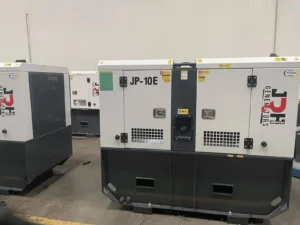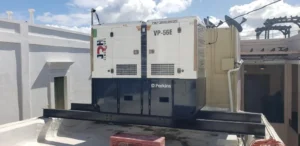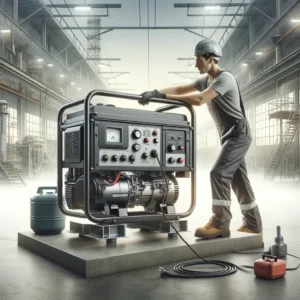How does the electric generator ignition coil work?
Understanding the Importance of the Electric Generator Ignition Coil
Power generators are an indispensable tool in many situations, from power outage emergencies to outdoor activities and construction projects. These devices convert mechanical energy into electrical energy, and one of the key components to their efficient and reliable operation is the ignition coil.
In this article, we will explore in detail the importance of the ignition coil in an electric generator, its operation, maintenance, and how to fix common problems. We'll also answer some frequently asked questions and offer helpful tips to ensure optimal performance from your generator. Let's go there!
Table of Contents
The ignition coil is an essential component in a vehicle's ignition system, playing a crucial role in generating sparks that ignite the air-fuel mixture in the engine. In this blog, we will explore in detail how this small but powerful device works, from its underlying theory to its practical implementation.
Basic Ignition Coil Theory:
The ignition coil operates on the principle of electromagnetic induction, a fundamental theory in electrical physics. When an electric current flows through a conductor, it creates a magnetic field around the conductor. If this current is interrupted, the magnetic field collapses, generating an electric current in the process.
Ignition Coil Components:
1. Iron Core: Located in the center of the coil, it increases the intensity of the magnetic field generated.
2. Primary and Secondary: The coil consists of two wire windings, known as the primary and secondary. The primary has fewer turns and is connected to the vehicle's electrical system, while the secondary has more turns and is connected to the spark plug.
3. High Voltage Connector: It joins the secondary to the spark plug, allowing the transmission of high voltage current.
4. Spark Plug: At the high voltage connector end, this spark plug initiates combustion in the engine's combustion chamber.
Practical Operation:
1 Primary Load:
-
- When you turn the ignition key, the vehicle's electrical system activates, sending current to the coil's primary.
- This current flows through the primary, generating a magnetic field around the iron core in the coil.
2 Power Interruption:
-
-
- At the right moment, the electronic control system or switch abruptly cuts off the current in the primary.
- This cut causes a rapid collapse of the magnetic field generated by the primary.
-
3 Induction in Secondary School:
-
- The collapse of the magnetic field induces an electric current in the secondary due to the turns ratio between both windings.
- Induction in the secondary is a form of energy transfer, where current flows due to the change in the magnetic field.
4 High Voltage Generation:
-
- The induced current in the secondary reaches much higher voltage levels than the original current in the primary.
- This high voltage is essential to generate the spark necessary to ignite the air-fuel mixture in the engine.
5 Spark on the Spark Plug:
-
- The high voltage current travels through the high voltage connector to the spark plug.
- In the spark plug, the spark jumps between the electrodes, initiating combustion in the combustion chamber.
Interaction and Synchronization:
The effectiveness of the ignition coil depends on precise synchronization with the engine management system. Sensors and the electronic control unit work together to determine the exact moment at which the spark should be generated, thus optimizing engine performance and efficiency.
Technological Evolution:
With the advancement of automotive technology, ignition coils have evolved. Individual ignition coils (COP) allow greater control over each cylinder, improving efficiency and reducing emissions.
Maintenance and Common Problems:
He maintenance Regular is essential to ensure the proper functioning of the ignition coil. Issues such as spark plug erosion, faulty wires, or debris buildup can affect your performance and should be addressed immediately.
In conclusion, the ignition coil, although small, plays an essential role in the operation of the engine. Its ability to convert low voltage current into a high voltage spark demonstrates the magic of electromagnetic induction in action, allowing today's motors to run efficiently and performance. The constant evolution in the design of these coils reflects the continuous advancement of automotive engineering towards more efficient and sustainable performance.
Power your home with reliable energy! Discover advanced solutions JRH for Electric generators. Contact us today and ensure an uninterrupted supply of energy! 🚀💡 #GeneratorsJRH

Hurricane season is a critical period for Puerto Rico, and being prepared can make the difference between safety and danger. In

Understanding how a hurricane forms allows us to be one step ahead and prevent the devastating effects of these natural phenomena. Especially in areas

In a world where energy efficiency is increasingly a priority, learning to save energy has become a crucial need for both

In a world that doesn't stop, the need for a reliable and continuous power source is more crucial than ever. At JRH Power

Have you ever wondered how electricity becomes a constant in our lives, even in the most critical moments? At JRH Power

In our modern world, where electricity is vital, power outages are a frequent reality. Know how to connect a generator to the house

